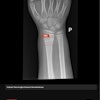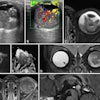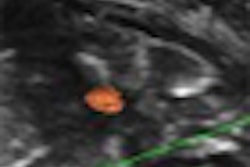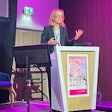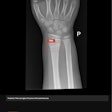
NEW YORK (Reuters Health), Sep 10 - A dexamethasone-based protocol can cut the risk of relapse and improve survival in high-risk children with acute lymphoblastic leukemia (ALL), with fewer side effects than were associated with older regimens, new research shows.
The regimen, designated the Dutch Childhood Oncology Group (DCOG) ALL-9 protocol, achieved five-year event-free survival rates of 84% for non-high-risk patients and 72% for high-risk patients, according to a report in the September 10 online issue of the Lancet Oncology.
High-risk patients were those with white blood cell counts of 50,000/microliter or more, T-cell phenotype, mediastinal mass, CNS or testicular involvement, and Philadelphia chromosome or mixed-lineage leukemia (MLL) rearrangement.
By comparison, the ALL-6 protocol against which ALL-9 was tested achieved a similar five-year event free survival of 83% in its non-high-risk group in the late 1980s, but this rate was only 53% among high-risk patients. Lead author Dr. Anjo Veerman from VU University Medical Center, Amsterdam, Netherlands, and colleagues explain that while ALL-9 is identical to ALL-6 for non-high-risk patients, changes were made for high-risk patients, in the hopes of improving outcomes.
They emphasize that the improvement in the high-risk group was achieved without cranial irradiation and without the use of such toxic drugs as anthracyclines, cyclophosphamide, or epipodophyllotoxins.
The ALL-9 trial involved 859 children, ages 1 to 18 years, with de novo disease who were recruited between January 1997 and November 2004. Median follow-up was 72.2 months.
In the non-high-risk group, 601 children received induction with dexamethasone, vincristine, and L-asparaginase for six weeks, then medium-dose methotrexate for three weeks, and then maintenance therapy. The 258 high-risk patients received the same three drugs plus daunorubicin for induction for six weeks, then high-dose methotrexate for eight weeks, and two intensification courses before maintenance therapy.
Triple intrathecal medication was given 13, 15, and 17 times in non-high-risk, high-risk, and central nervous system-affected patients, respectively.
In all patients, maintenance therapy -- consisting of mercaptopurine and methotrexate alternating with dexamethasone and vincristine -- was continued until 109 weeks.
The complete remission rates in the non-high-risk and high-risk groups were 98.5% and 96.9%, respectively. Five deaths in the non-high-risk group and four in the high-risk group occurred during induction therapy. Isolated central nervous system relapses were noted in 2.6% of patients.
On multivariate analysis, the strongest predictor of outcomes was the DNA index, followed by age, and then the white blood cell count, the authors note.
"The most radical feature of (the ALL-9) protocol is the omission of prophylactic cranial irradiation in all patients," Dr. Ching-Hon Pui, from St Jude Children's Research Hospital in Memphis, TN, writes in a related editorial. "Not surprisingly, (the researchers) have reported only a few cases of osteonecrosis and only two cases of second malignancy."
"The vast majority of their patients are expected to survive with an excellent quality of life," Pui added.
Lancet Oncol 2009.
Last Updated: 2009-09-09 18:30:11 -0400 (Reuters Health)
Related Reading
Childhood leukemia curable without cranial radiation, June 24, 2009
Copyright © 2009 Reuters Limited. All rights reserved. Republication or redistribution of Reuters content, including by framing or similar means, is expressly prohibited without the prior written consent of Reuters. Reuters shall not be liable for any errors or delays in the content, or for any actions taken in reliance thereon. Reuters and the Reuters sphere logo are registered trademarks and trademarks of the Reuters group of companies around the world.

